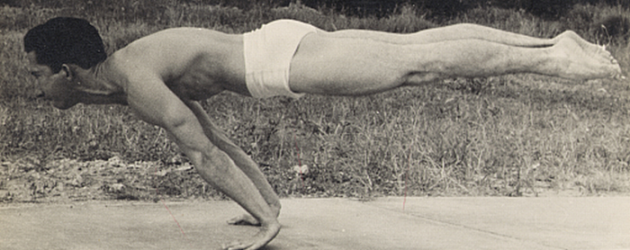bluejeff
Level 7 Valued Member
I put this in the "other" thread because I felt it could be applied to more than just calisthenics training.
This is a commonly cited article when the question of isometrics or eccentrics comes up.

 stevenlow.org
stevenlow.org
Indeed, I have cited it quite a few times myself. I'm just using this article as an easy reference point for my question. In the article, Low discusses one of the common obstacles in progressing in the calisthenics world: the large jump in difficulty between variations of specific exercises (so perhaps this may apply to kettlebells in some way?). My question here has to do specifically with eccentrics only, and how to use them bridge big in resistance.
In Steven Low's book, Overcoming Gravity (2nd Edition), he writes:
He goes on to discuss how longer eccentric times will induce metabolic adaptation, or even get into slow twitch adaptations.
Now, here's my question. Since I think it's safe to say that most of us train using both eccentric and concentric portions of a movement, unless we are moving really slow, or going into very high rep territory, we are probably mostly using fast twitch fibers for our strength work. The general recommendation in the bodyweight and calisthenics community is to use 10 second eccentrics when using them to progress from say, pike pushup to a full handstand pushup (the plateau I have been stuck at seemingly forever). According to Steven Low, faster eccentrics elecit a better HTMU response. So wouldn't it be more effective to do a slightly higher volume of faster (say, 5-second) eccentrics if you want them to carry over to concentric, less slow-twitch biased movements?
That is, performing multiple cluster sets of eccentric handstand push-ups with an eccentric time of about 5 seconds or less, versus doing something like five sets of 3-5 eccentrics with the eccentric length being 10 seconds or more.
This is a commonly cited article when the question of isometrics or eccentrics comes up.

Prilepin tables for bodyweight strength isometric and eccentric exercises - Steven Low
The Second Edition of Overcoming Gravity has been released on Amazon! This is one of the articles that I wrote in response to the First Edition of the book, and more detail is included about this topic in the Second Edition. I’ve worked on overhauling this article to give you a
Indeed, I have cited it quite a few times myself. I'm just using this article as an easy reference point for my question. In the article, Low discusses one of the common obstacles in progressing in the calisthenics world: the large jump in difficulty between variations of specific exercises (so perhaps this may apply to kettlebells in some way?). My question here has to do specifically with eccentrics only, and how to use them bridge big in resistance.
In Steven Low's book, Overcoming Gravity (2nd Edition), he writes:
the irony of eccentrics is that the studies on eccentric training seem to indicate that one-second eccentric movements are better at stimulating hypertrophy and strength adaptations that longer eccentrics such as six seconds. This means that fast eccentrics preferentially activate the HTMUs (high-tension motor units), which have the greatest potential for power, strength, and hypertrophy.
He goes on to discuss how longer eccentric times will induce metabolic adaptation, or even get into slow twitch adaptations.
Now, here's my question. Since I think it's safe to say that most of us train using both eccentric and concentric portions of a movement, unless we are moving really slow, or going into very high rep territory, we are probably mostly using fast twitch fibers for our strength work. The general recommendation in the bodyweight and calisthenics community is to use 10 second eccentrics when using them to progress from say, pike pushup to a full handstand pushup (the plateau I have been stuck at seemingly forever). According to Steven Low, faster eccentrics elecit a better HTMU response. So wouldn't it be more effective to do a slightly higher volume of faster (say, 5-second) eccentrics if you want them to carry over to concentric, less slow-twitch biased movements?
That is, performing multiple cluster sets of eccentric handstand push-ups with an eccentric time of about 5 seconds or less, versus doing something like five sets of 3-5 eccentrics with the eccentric length being 10 seconds or more.
